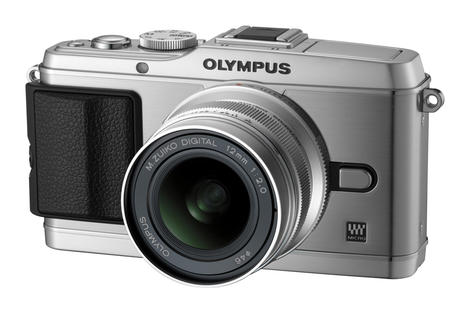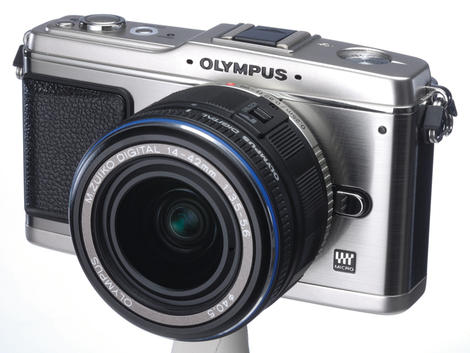
We'd been waiting for an upgrade to Canon's professional cameras for some time, and last week we were finally rewarded with the Canon EOS 1DX. The camera, which now sits at the very top of the Canon pile will be available to buy from March 2012. But, before you get your pre-order in, here's ten vital things you need to know about the 1DX.
1. The 1DX replaces both the 1D Mark IV and the 1Ds Mark III
We were unsure whether or not the new professional model from Canon would be an update to the 1D Mark IV, or the 1Ds Mark III. In the past, it has always been a question of choosing whether you need speedy shooting, for press and sports photographers, something which the 1D Mark IV provided, or whether you need high resolution where speed wasn't an issue, such as for portrait work, which is where the 1Ds Mark III traditionally found its home.
With the new 1DX however, both these models have been replaced and amalgamated into one camera, which Canon claims means you no longer have to choose, and you can instead have both high quality and high speed.
However, while this does replace both cameras, the 1D Mark IV will still be available to buy.
2. Sensor size

Some may be surprised to find "only" an 18 million effective pixel sensor on board the 1DX, especially considering its predecessor sports 21 megapixels, and rival Nikon's D3x features a 24.5 megapixel sensor.
Canon told us that that the decision to limit the pixel count was made to allow better image quality at high sensitivity settings. The sensor on board has, for the first time in a full-frame Canon SLR, gapless microlenses. These help to improve the light gathering potential of each photodiode for pushing sensitivity settings higher.
It's also worth noting that 1D Mark IV users choosing to upgrade may miss the 1.3x crop factor, as the 1DX uses a full frame sensor.
3. New AF system
The 1DX features a whopping 61 AF points, to help provide better coverage of a scene and catch those moving subjects.
The points are clustered around the centre of the frame, but offer more coverage than previous Canon cameras.
41 cross-type (and 5 dual cross type) points have been included, while new AF presets can be saved for shooting challenging subjects.
4. New EOS iTR AF
The new EOS iTR AF (Intelligent Tracking and Recognition Autofocus), Canon claims, is ideal for wedding and event photography, along with sports and photojournalism. The default AF mode uses phase detection AF, while a new second option uses Face Detection technology to track recognised faces and/or colour information. This makes it ideal for shooting sports, where facial recognition of the original subject will help keep that person in focus throughout the scene.
EOS iTR AF will work both in AI Servo with AF selection or zone AF.
5. Continuous shooting speeds

The new EOS iTR AF (Intelligent Tracking and Recognition Autofocus), Canon claims, is ideal for wedding and event photography, along with sports and photojournalism. The default AF mode uses phase detection AF, while a new second option uses Face Detection technology to track recognised faces and/or colour information, making it ideal for shooting sports, where facial recognition of the original subject will help keep that person in focus throughout the scene.
6. New layout
Extra features and buttons have been added to the design of the 1DX, which make it much easier to use when shooting in portrait format.
An extra mini-joystick multi controller provides an easy way to navigate the menu and select AF points when the camera is rotated.
Canon has also added extra buttons to the top of the camera, including a dedicated white balance button.
7. The new generation metering system has its own processor
The newly designed RGB metering system on board the camera is powered by its own Digic 4 processor.
This means that the metering system can work quicker than on previous models, and is akin to having a processor that you might find in an SLR or compact camera as an extra feature on board the camera.
The metering sensor is also linked to the AF system and allows for face and colour detection.
8. Improved AE performance

AE performance on the 1DX has been improved to the extent that Canon yesterday claimed that it was "like having an inbuilt greycard", that is, exposure and white balance should be much improved on from previous models.
9. Improved user interface
Canon has spent a lot of time improving the menu interface of the 1DX, one of the key new features is the addition of a dedicated AF tab which groups together of the AF options for quick access.
Clearer terms have been used to make each option more understandable, while a help menu has been included to explain more complicated features.
The Quick menu (Q) button can also be used to cycle between the tabs, while the multi controllers or main dial can be used to scroll through the various options.
10. Multiple exposures
During a seminar at Canon's Pro Solutions show on 26th October, landscape photographer Charlie Waite expressed his concern about a lack of multiple exposure capability in any Canon camera to date.
The 1DX answers that, with the ability to shoot up to 9 exposures in one frame, which will be a great bonus for creative photographers wanting to push the limits of their camera.
For a more in-depth look at the features of the new camera, have a look at our Hands On: Canon EOS 1DX review, and stay tuned for a full review in due course.
Source: Google Reader



































